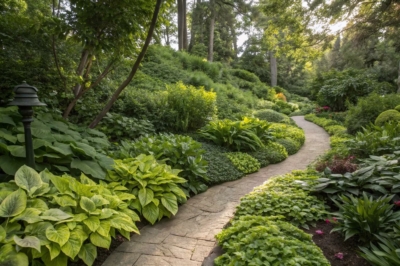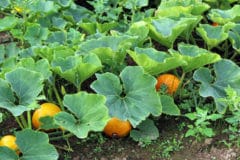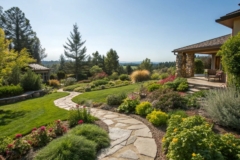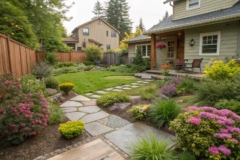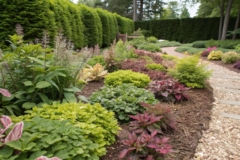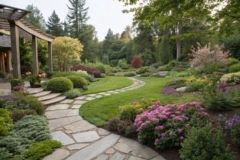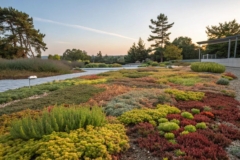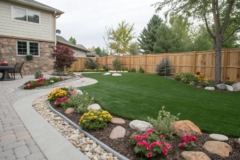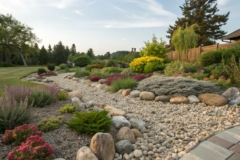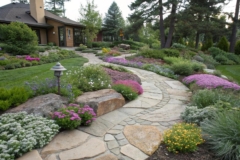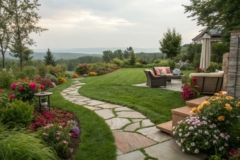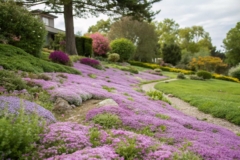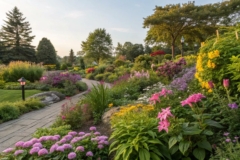1. Pathways with Ground Cover
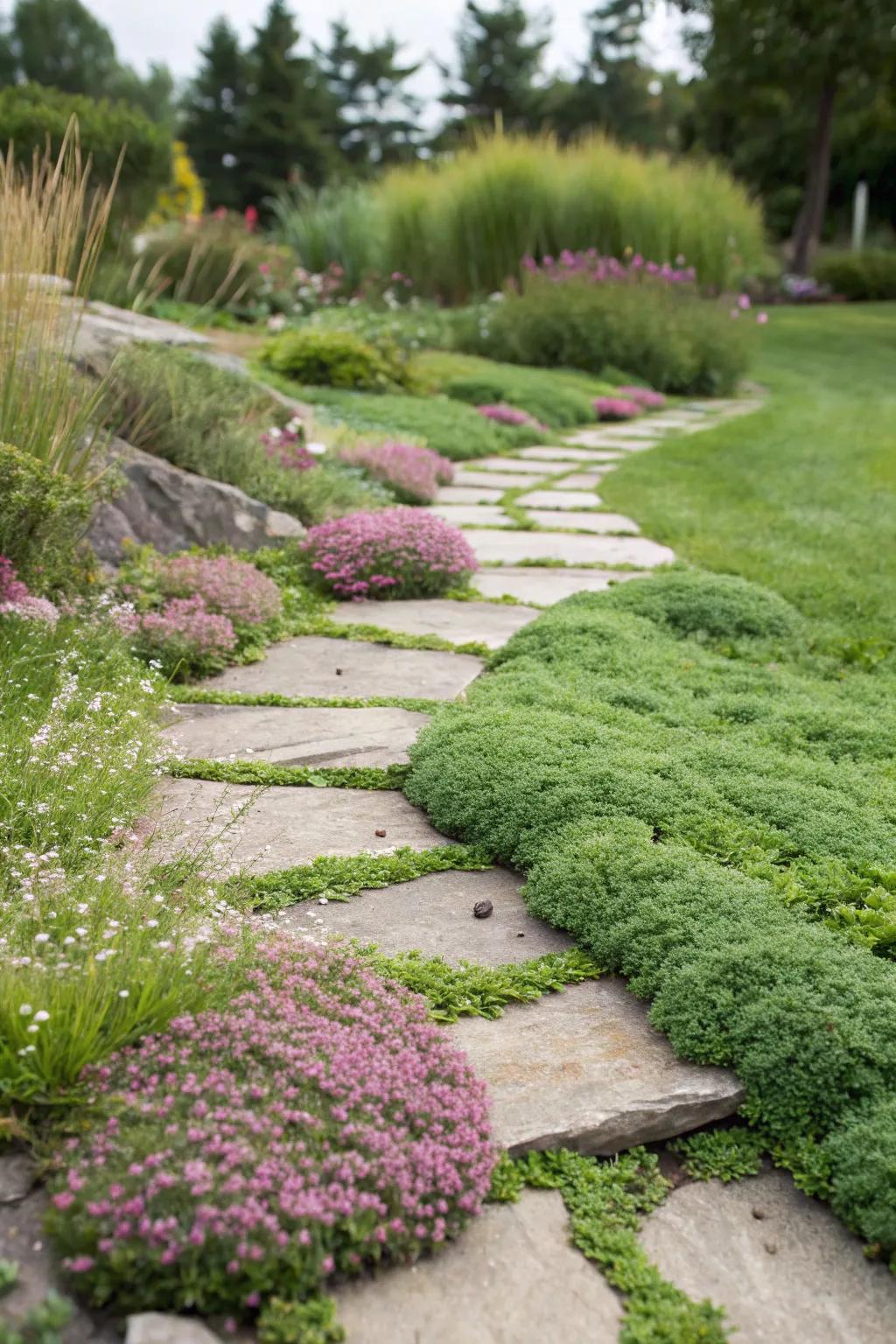
Imagine stepping stones peeking through a carpet of creeping thyme or stonecrop. I’ve found that using ground covers along pathways not only softens the look but also adds a charming, whimsical feel to any garden.
These products might be useful:
- Creeping Thyme Seeds: Transform your path with lush, aromatic creeping thyme. Perfect for a dreamy garden atmosphere.
- Stonecrop Plant Mix: Enhance your garden paths with vibrant stonecrop. Ideal for a low-maintenance, colorful ground cover.
- Garden Stepping Stones: Add elegance to pathways with decorative stepping stones. Complement your ground cover beautifully.
2. Flowering Ground Covers
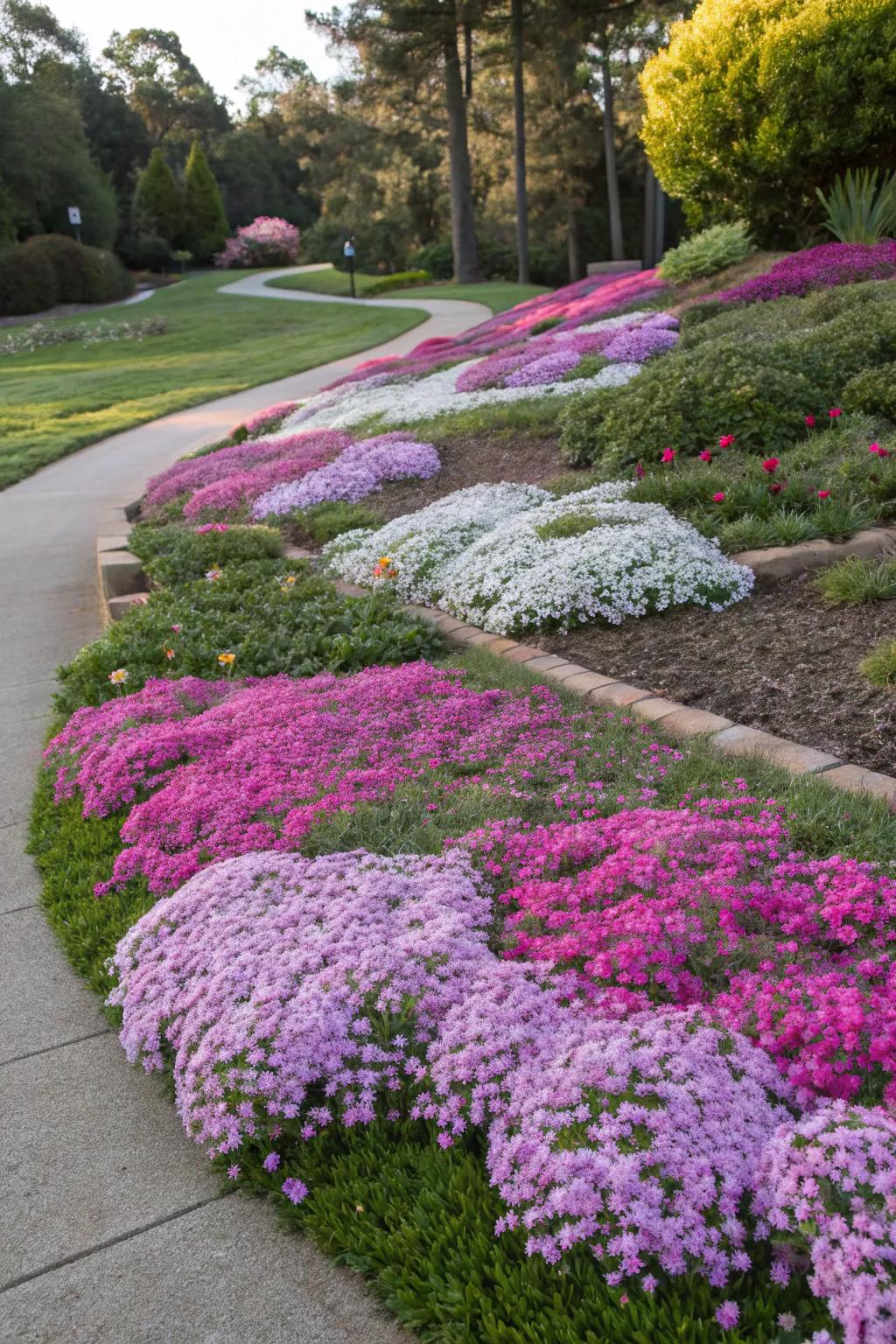
For a burst of color, why not try creeping phlox or ice plant? Their vibrant blooms bring life to dull spots in the garden, and trust me, the pollinators will thank you!
Check if these fit your needs:
- Creeping Phlox Seeds: Enhance your garden with vibrant phlox blooms, creating a lively, colorful ground cover today.
- Ice Plant Mix Seeds: Grow colorful ice plants that attract pollinators and brighten up your garden space easily.
- Garden Fertilizer for Flowering Plants: Boost your flowering ground cover’s health with this specially formulated garden fertilizer now.
3. Eco-friendly Choices
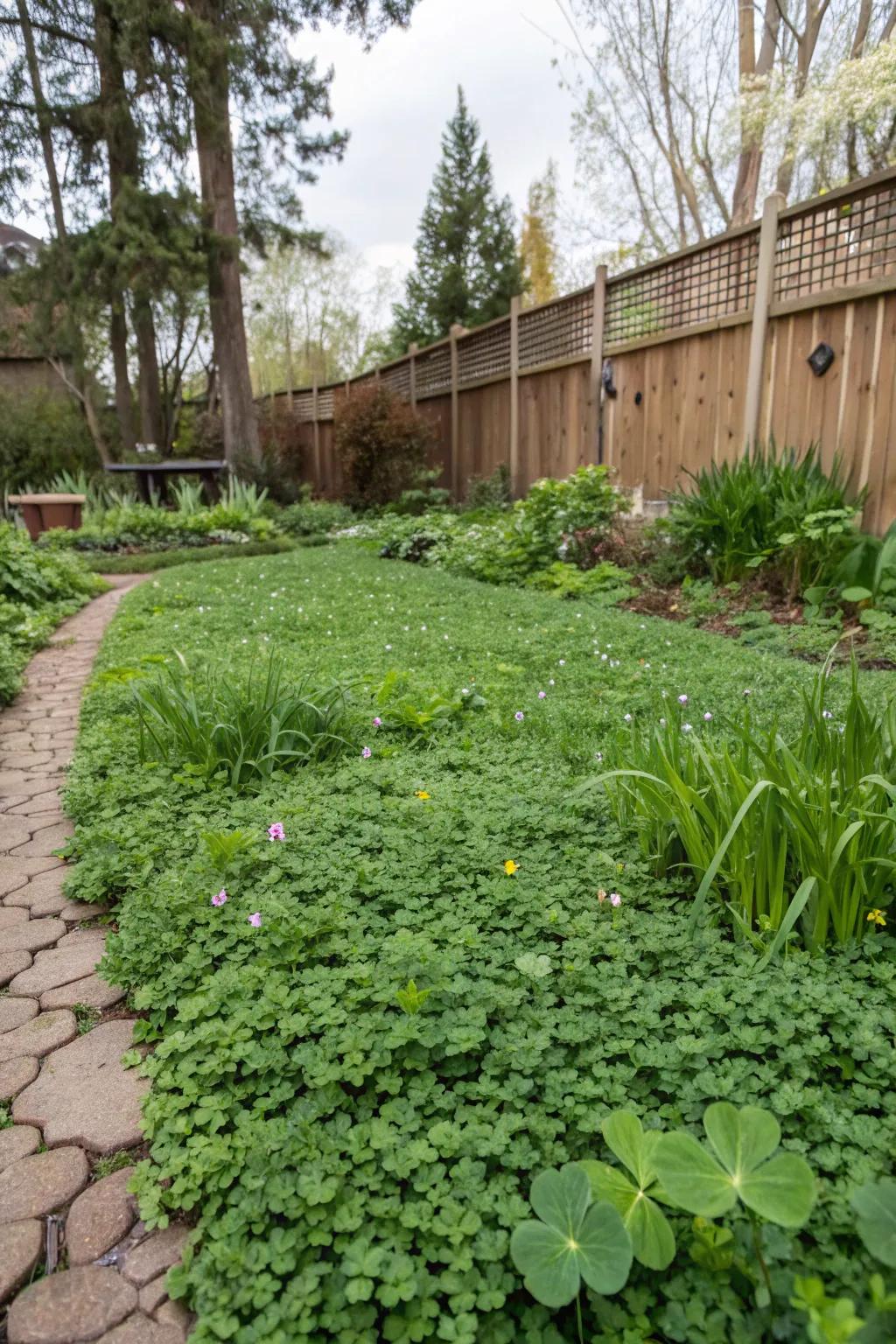
Opt for ground covers like clover that benefit the environment by fixing nitrogen. It’s a win-win for both your garden and the planet.
Some ideas to consider:
- Clover Ground Cover Seeds: Transform your garden into a lush carpet with easy-to-grow clover seeds today.
- Organic Nitrogen Fertilizer: Boost your garden’s health naturally with eco-friendly organic nitrogen fertilizer.
- Sustainable Garden Soil Mix: Enhance your growing conditions with a sustainable soil mix perfect for ground covers.
4. Low Maintenance Options
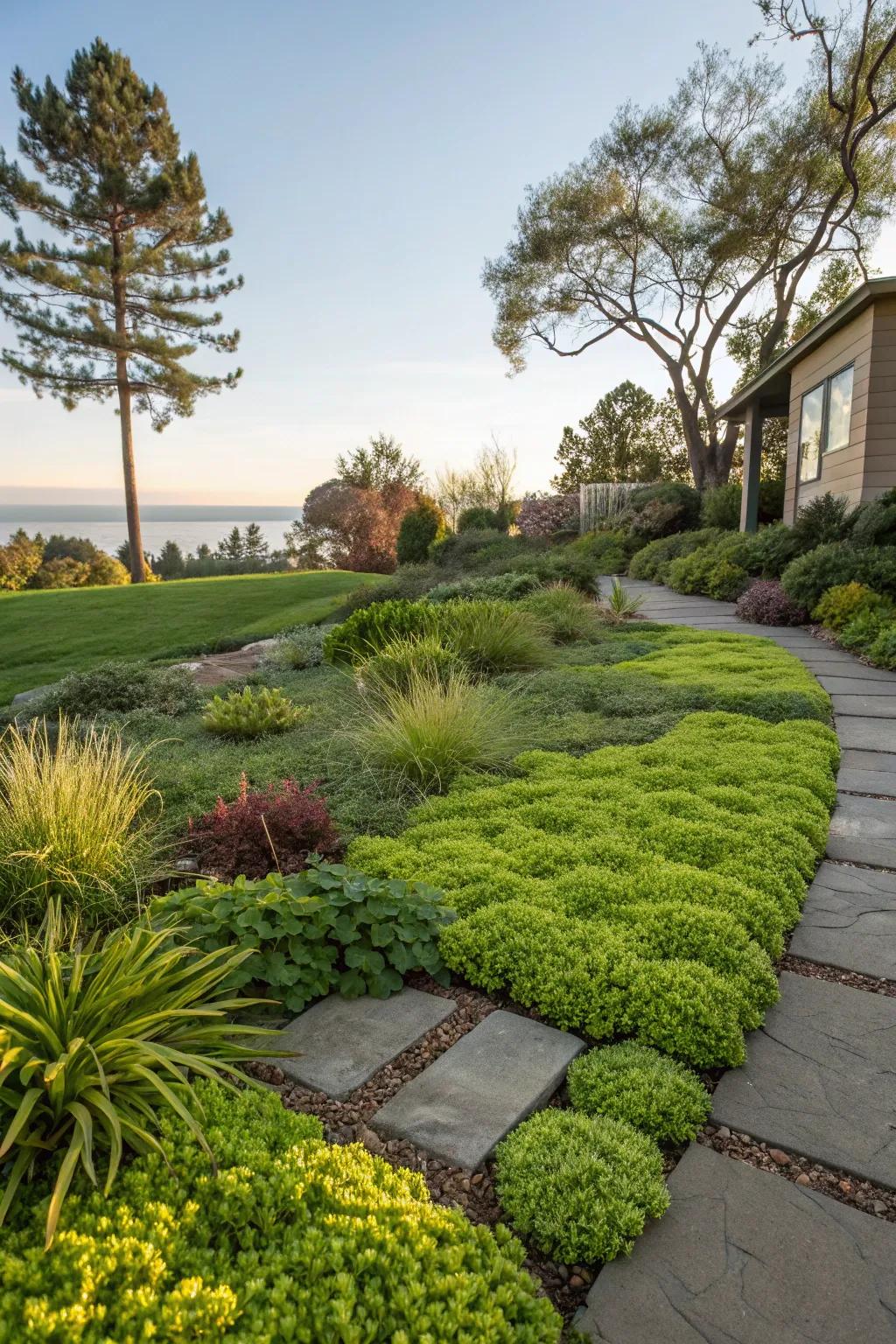
If you’re like me and prefer lounging over weeding, go for sedum or lilyturf. These hardy plants thrive with minimal care and cover large areas beautifully.
Some handy options:
- Live Sedum Plant Assortment: Transform your garden effortlessly with vibrant, hardy sedum plants. Ideal for low-maintenance beauty.
- Liriope Muscari (Lilyturf) Seeds: Sow lilyturf seeds for lush, easy-care ground cover that thrives with minimal effort.
- Garden Ground Cover Fabric: Install ground cover fabric to reduce weeds and promote healthy plant growth in your garden.
5. Scented Walkways
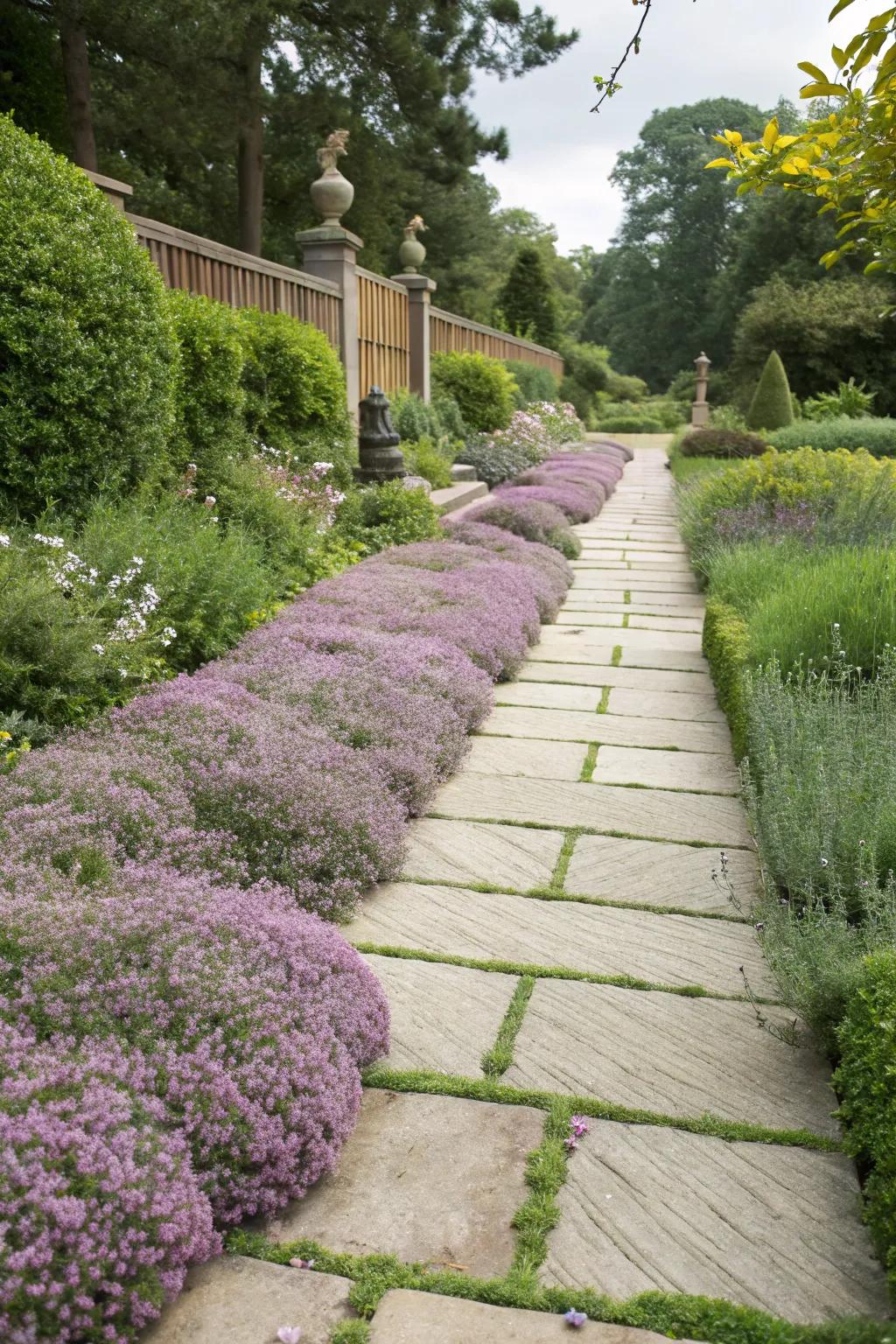
Line your walkway with woolly thyme for a delightful scent with every step. I love how it releases a herbal fragrance that feels like a warm hug.
Try these:
- Woolly Thyme Seeds: Plant woolly thyme seeds to enhance your walkway with delightful fragrance and lush greenery.
- Organic Garden Soil: Use organic garden soil to ensure healthier growth and vibrant thyme plants along your path.
- Garden Pathway Edging: Install garden pathway edging for a neat appearance and to contain your fragrant thyme plantings.
6. Colorful Borders

Use ground covers like ajuga or creeping jenny to create vibrant borders along pathways. They add a pop of color and neatly frame any garden space.
Products that could assist:
- Ajuga Seeds for Ground Cover: Enhance your garden borders with ajuga seeds for vibrant, resilient ground cover plants.
- Creeping Jenny Live Plants: Create lively garden edges with easy-to-grow creeping jenny plants. Perfect for brightening pathways.
- Garden Pathway Edging Kit: Frame your garden path beautifully with a durable garden edging kit, suitable for any landscape.
7. Seasonal Highlights
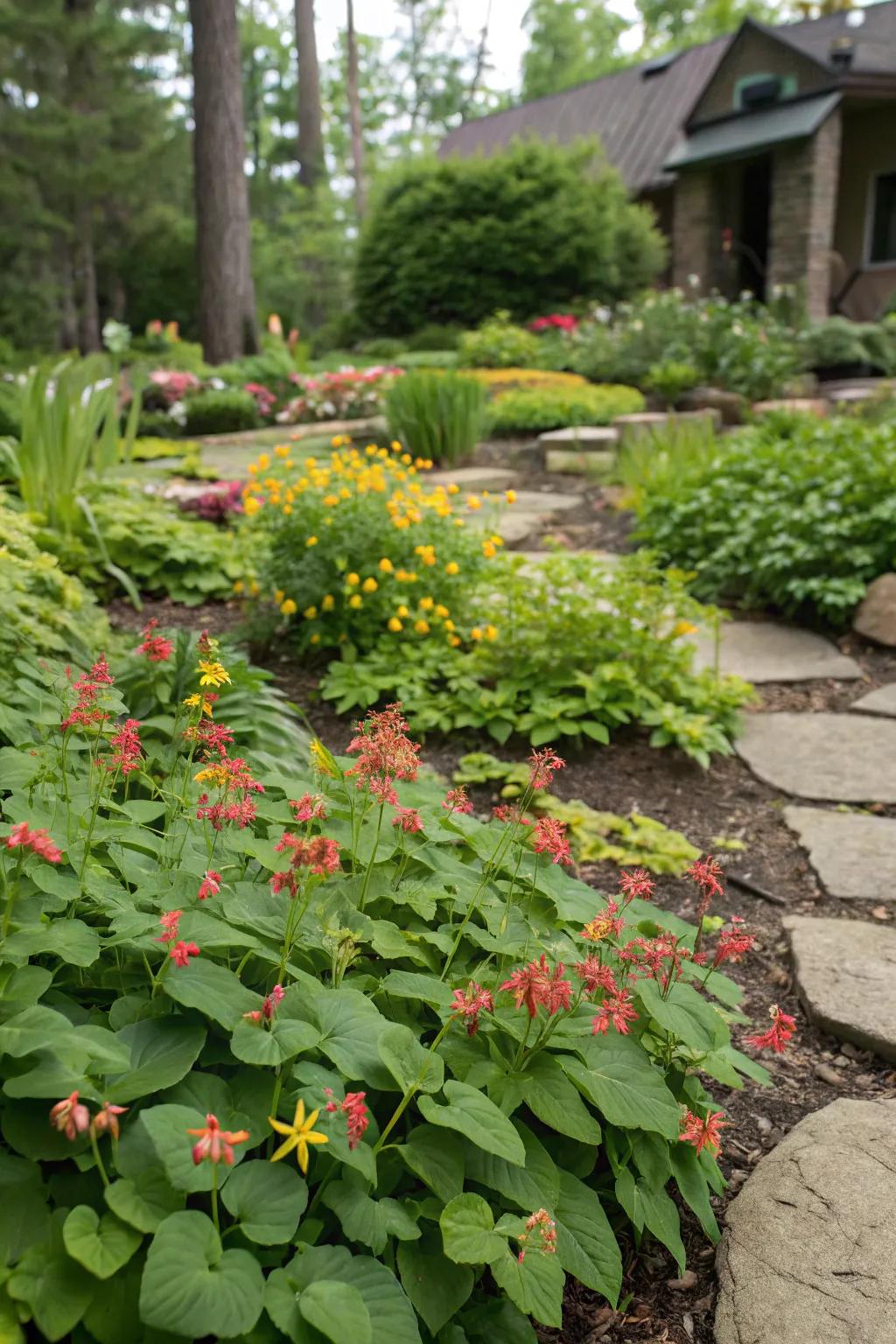
Incorporate ground covers with seasonal blooms, like epimedium, for year-round interest. It’s a simple trick that keeps my garden lively all year.
A few suggestions:
- Epimedium Seeds: Add vibrant seasonal blooms to your garden with these easy-to-grow epimedium seeds.
- Perennial Ground Cover Mix: Enhance garden liveliness all year with this diverse perennial ground cover seed mix.
- Garden Pathway Stones: Create attractive garden pathways that complement your ground covers with these durable natural stones.
8. Planting in Pavers
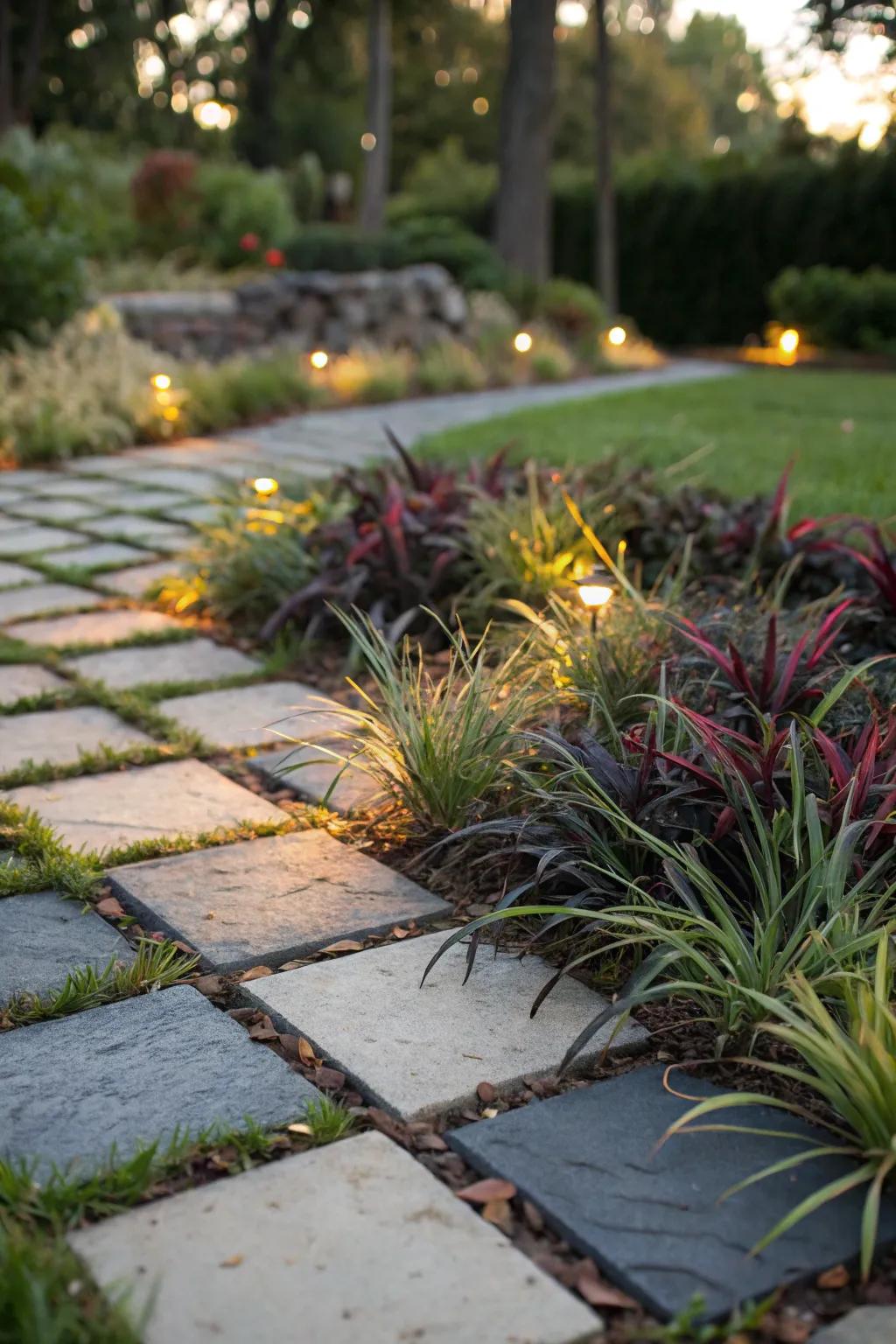
Add a pop of color between pavers with plants like black mondo grass. It’s an easy way to soften hardscaping with a touch of nature.
Maybe worth checking out:
- Black Mondo Grass Plants: Enhance your garden path with lush black mondo grass. Perfect for adding color between pavers.
- Garden Paver Lights: Illuminate your pavers beautifully with durable garden lights. Create a warm, inviting evening ambiance.
- Soil and Fertilizer for Ground Cover: Nourish your plants for optimal growth between pavers. Ensure vibrant, healthy garden ground cover.
9. Under Tree Textures
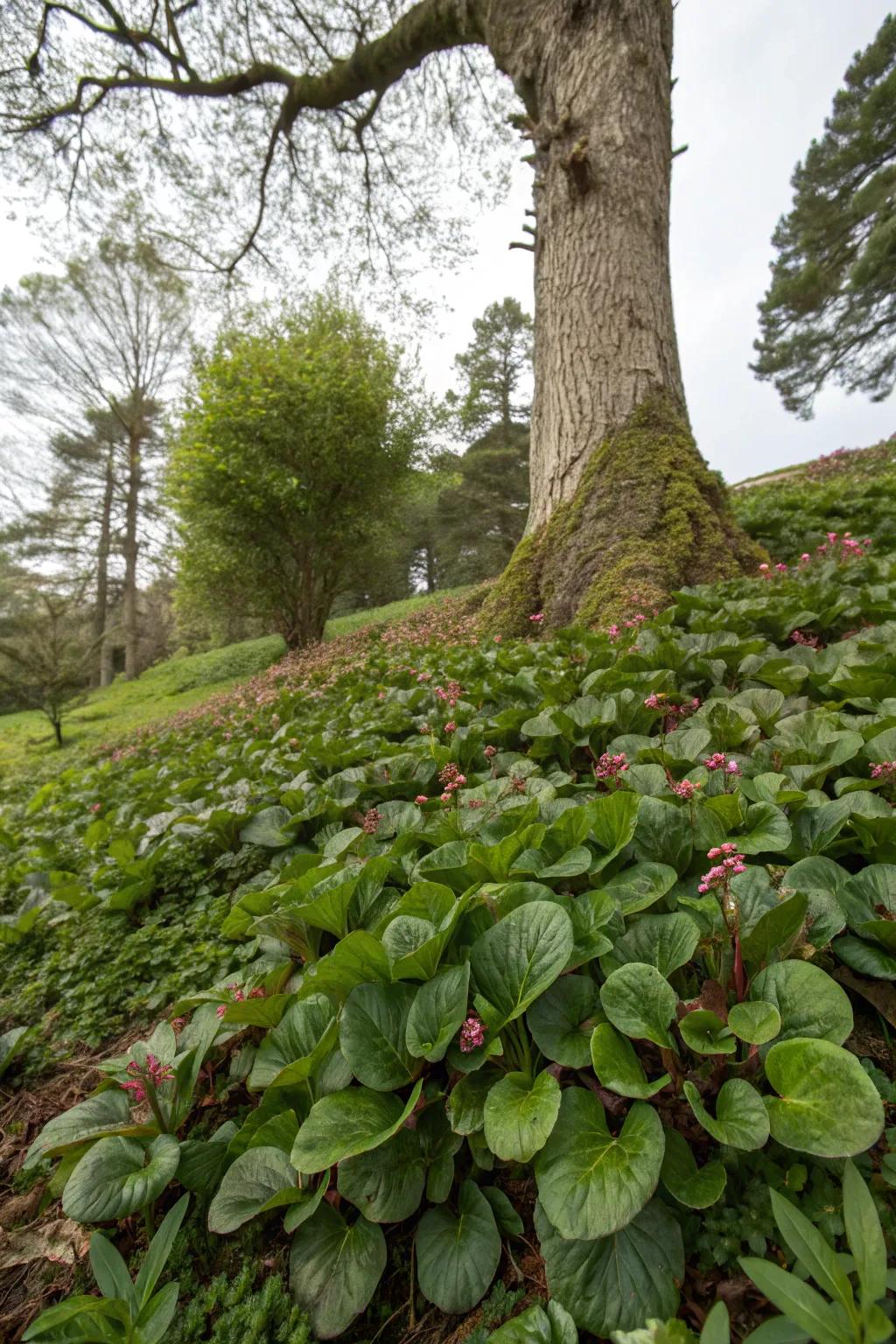
Try planting taller ground covers under trees to bridge the gap to the canopy. Bergenia is my go-to for adding texture and seasonal interest in shady spots.
Check these products out:
- Shade-Loving Perennial Plants Pack: Transform shaded areas with a perennial plants pack perfect for under-tree textures. Add lush greenery!
- Organic Mulch for Shade Gardens: Enhance moisture retention and weed control with organic mulch in your shaded garden areas.
- Garden Shade Cloth: Protect and nurture shade-loving plants with a durable garden shade cloth. Ideal for ground covers!
10. Naturalistic Design
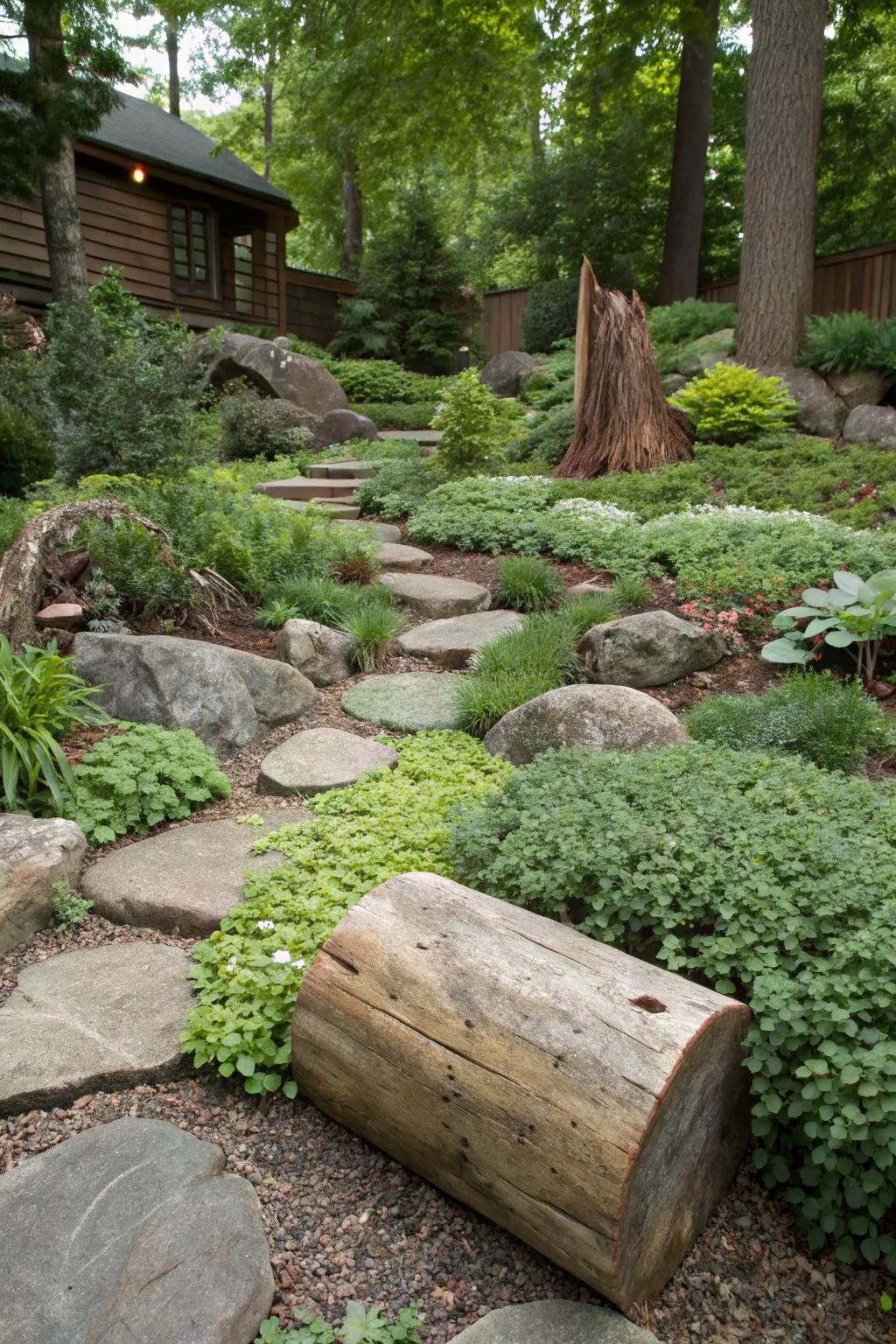
Incorporating elements like rocks and logs with ground covers gives your garden a serene, natural vibe. I’ve used this trick to make my yard feel like a little escape to the wilderness.
A few choices to try:
- Decorative Garden Rocks: Enhance your garden’s natural charm with these decorative rocks. Perfect for creating serene landscapes.
- Wooden Garden Logs: Add rustic flair to your garden with these wooden logs, ideal for a naturalistic design.
- Ground Cover Plants: Transform your garden with lush ground cover plants. Ideal for filling spaces beautifully.
11. Mixed Planting

Mixing shrubs, flowers, and ground covers can create a dynamic landscape. I love how this approach adds depth and interest, making my garden look like a natural oasis.
Items that may come in handy:
- Shrub and Flowering Plant Collection: Transform your garden with vibrant shrubs and flowers for a lively and colorful landscape.
- Ground Cover Plant Seeds: Enhance your garden’s richness with lush ground cover for a natural and full appearance.
- Garden Soil and Fertilizer Pack: Boost your plants’ growth with nutrient-rich soil and fertilizer for a thriving garden oasis.
12. Cozy Courtyard
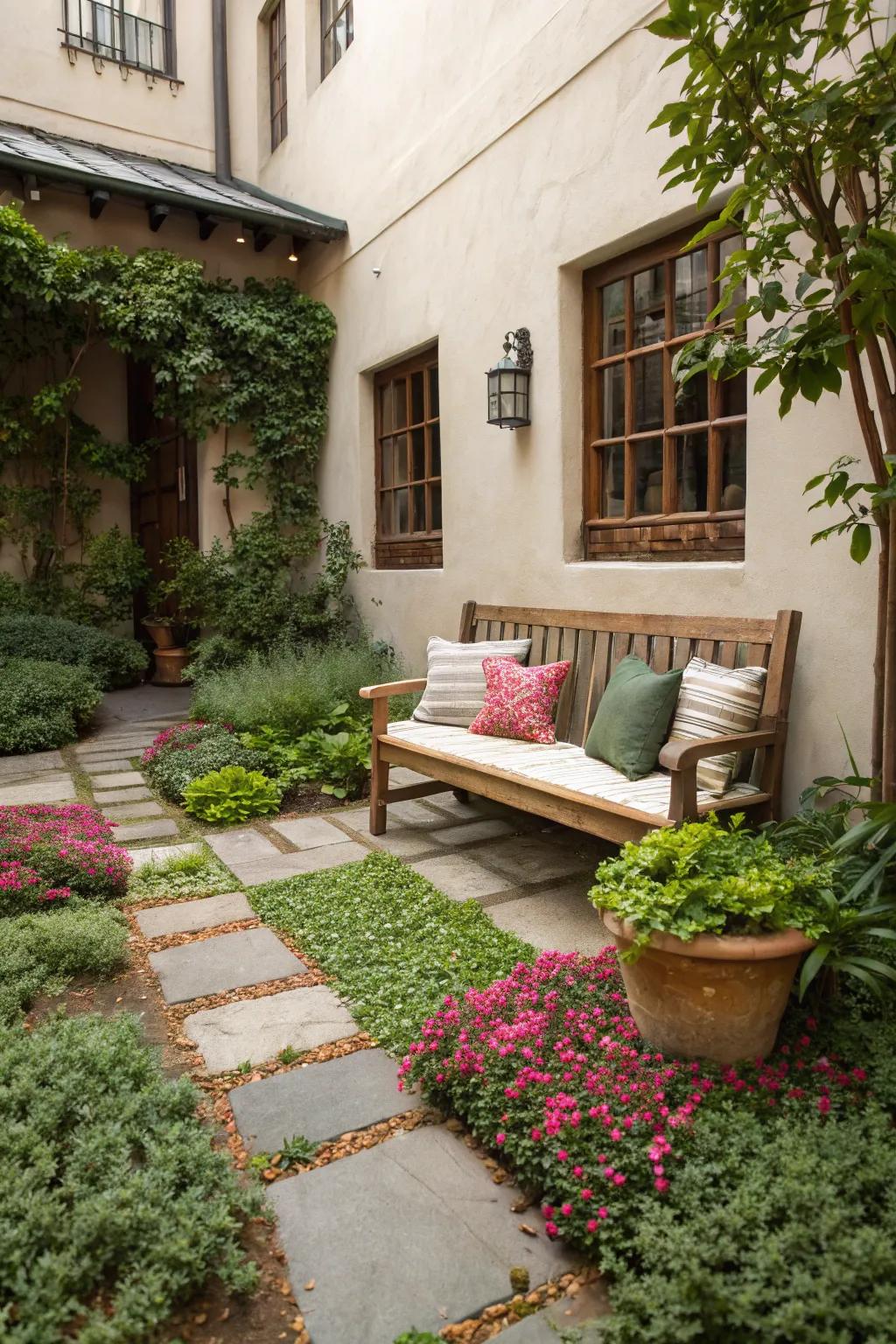
Imagine a cozy nook with ground covers surrounding a bench or bistro set. I’ve turned my yard into a perfect spot for morning coffee with this little touch.
Possibly helpful picks:
- Outdoor Wooden Bench: Transform your garden into a cozy haven with a stylish wooden bench for relaxation.
- Decorative Outdoor Cushions: Add comfort and charm to your courtyard seating with vibrant and durable outdoor cushions.
- Ground Cover Plant Pack: Enhance your garden’s beauty with diverse ground covers, perfect for lush, low-maintenance greenery.
13. Ground Cover with Rocks
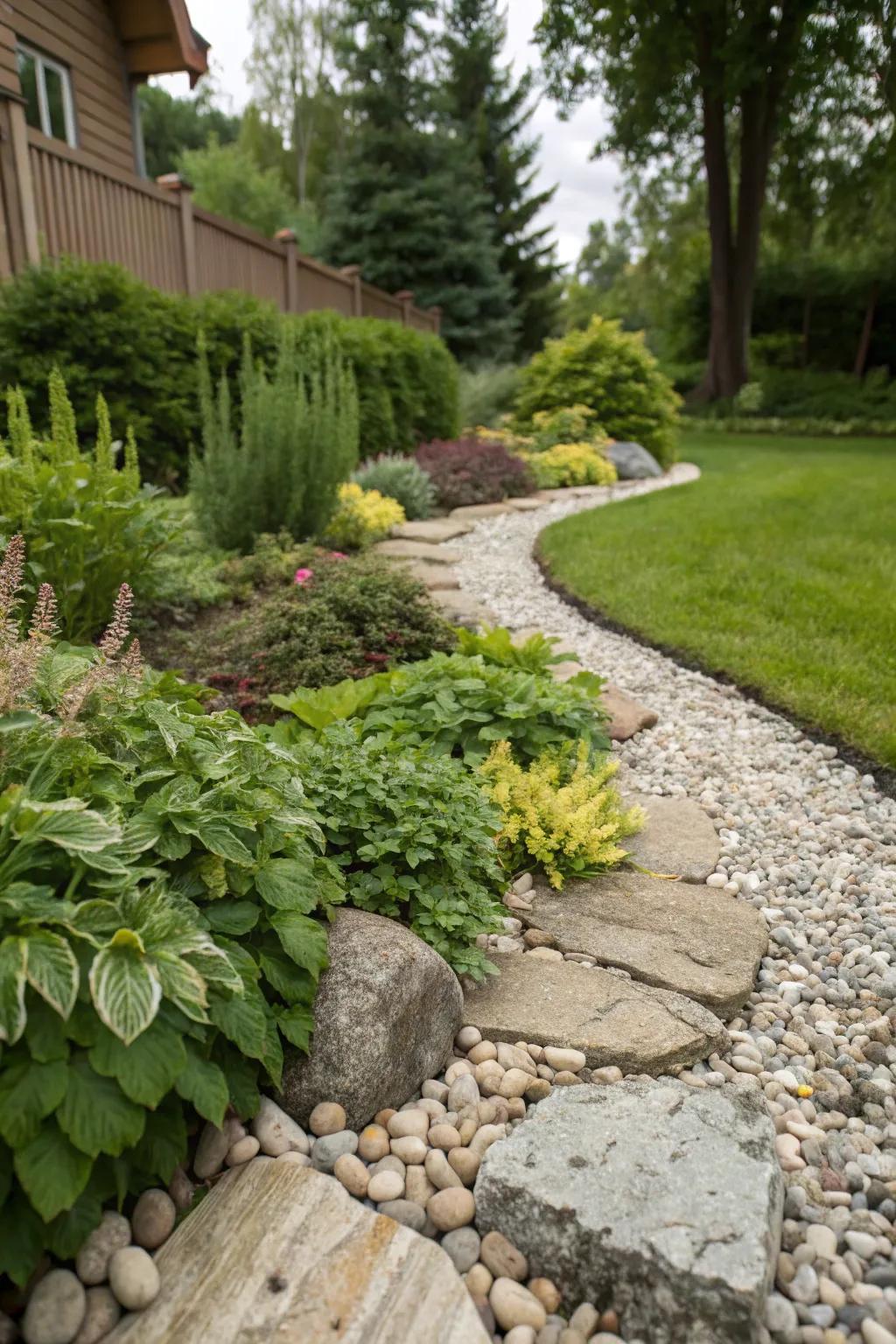
Pair ground covers with decorative stones or gravel for a striking look. This combination is one of my personal favorites for adding texture and contrast.
Useful items to consider:
- Decorative River Rocks: Enhance your garden’s appeal with these decorative river rocks for a natural, stylish contrast.
- Garden Gravel: Create striking pathways and ground cover by using premium garden gravel in your landscape design.
- Landscape Edging Stones: Define your garden borders with durable edging stones, adding structure and charm to your space.
14. Ground Cover Lawn
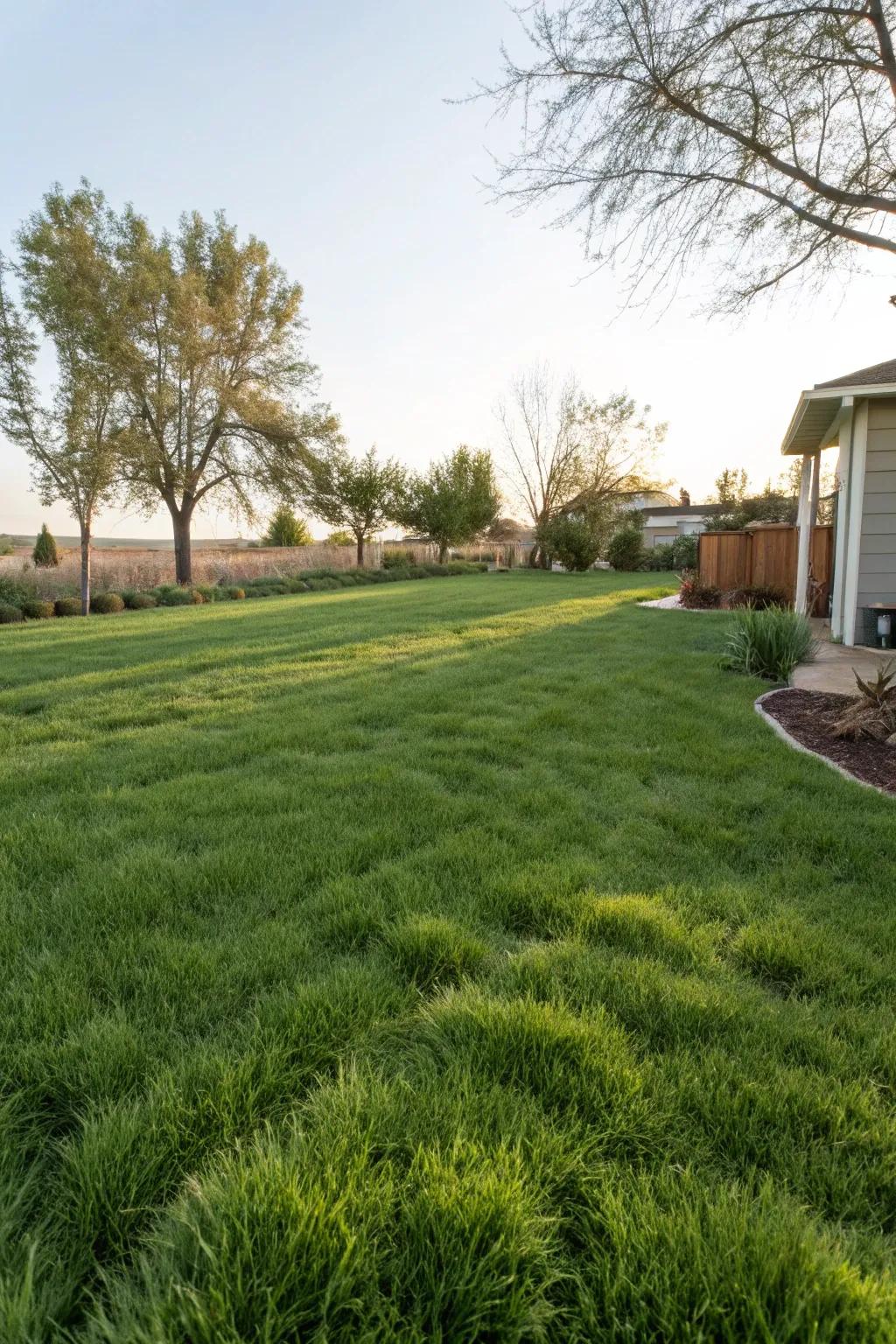
Switch out the traditional lawn for a no-mow fescue blend. It keeps things lush and green without the weekly mowing chore.
These products might help:
- No-Mow Fescue Grass Seed Mix: Transform your lawn with this low-maintenance, lush Fescue blend for a green, effortless landscape.
- Automatic Lawn Sprinkler System: Ensure your Fescue lawn stays hydrated effortlessly with this easy-to-install sprinkler system.
- Organic Lawn Fertilizer: Nourish your no-mow Fescue with this eco-friendly fertilizer for healthier, vibrant grass.
15. Surprising Design Elements
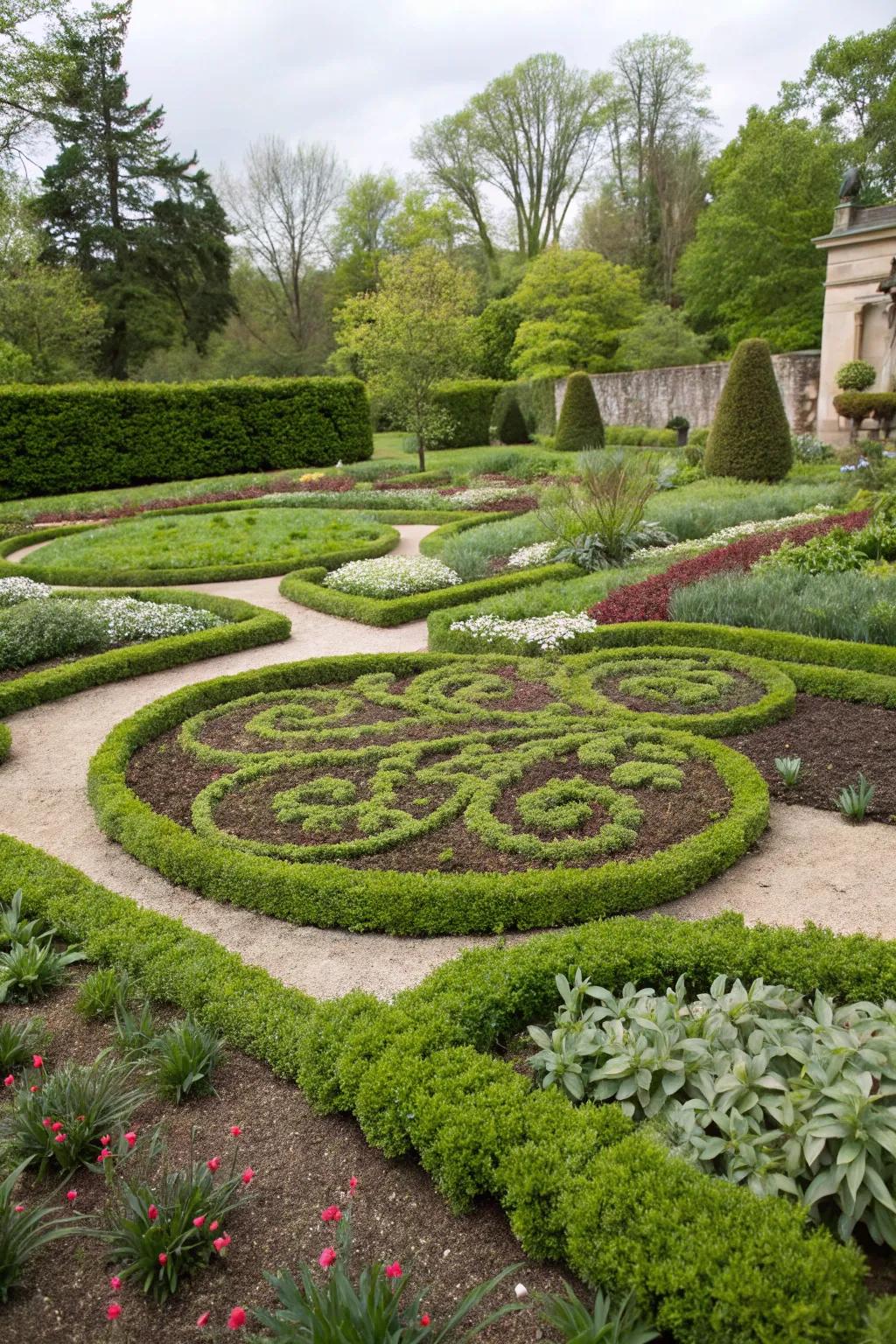
Use ground covers to create unexpected patterns or shapes. It’s a fun way to personalize your garden, and guests always love the surprise!
A few helpful options:
- Decorative Garden Edging: Define intricate garden patterns effortlessly with flexible decorative edging. Elevate your design creativity today!
- Ground Cover Seeds Assortment: Explore a variety of ground cover seeds to personalize your garden with unique patterns and textures.
- Garden Path Stepping Stones: Create charming pathways and highlight your garden’s unique styles with versatile stepping stones.
16. Erosion Control
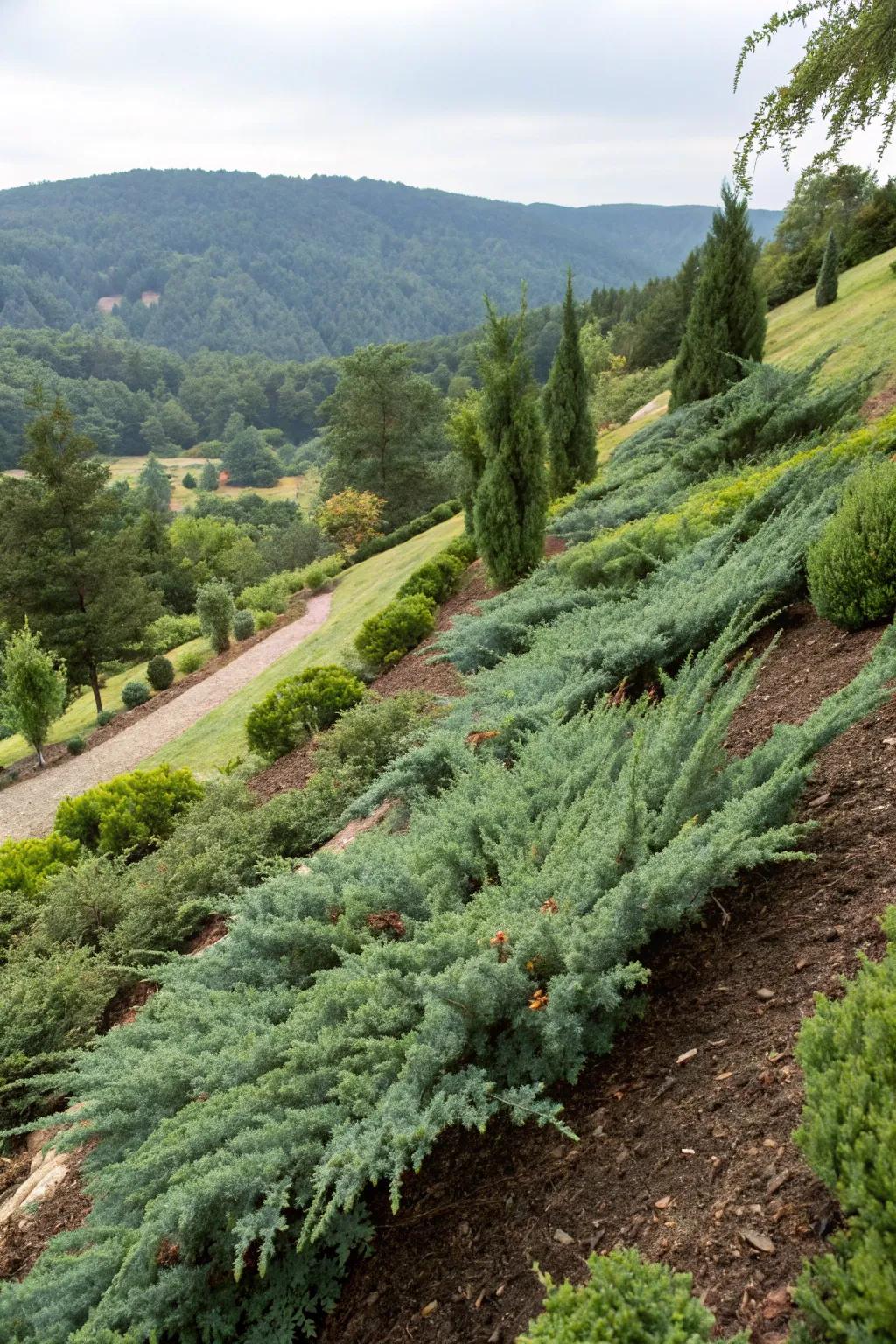
For those tricky slopes, use ground covers like creeping juniper to help prevent erosion. It’s a natural solution that looks stunningly effective.
Give these a look:
- Creeping Juniper Seeds: Plant creeping juniper seeds to naturally stabilize slopes and beautify your landscape effortlessly.
- Garden Soil for Erosion Control: Enhance erosion control efforts with high-quality garden soil, perfect for ground cover plants.
- Landscaping Mulch: Use landscaping mulch to retain moisture and suppress weeds around your ground covers.
